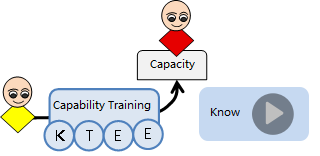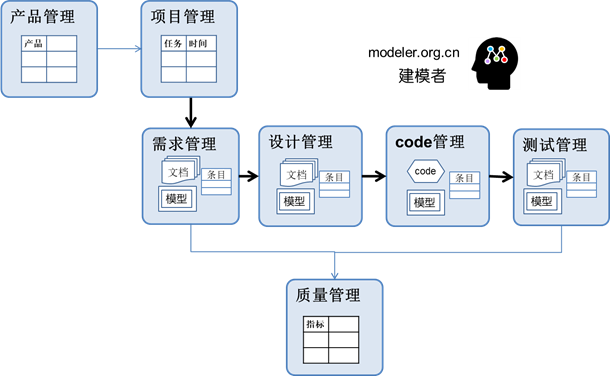|
|
| Successful Case
|
| Continental Automotive Electronics |
| Bosch Automotive Electronics |
| Schaeffler electric drive |
| Joyson Automotive Electronics |
| Huawei Technical Center |
| BMW Automotive Research and Development Center |
| Geely Auto Research Institute |
| Byd Automotive Research Institute |
| |
|
|
|
|
|
|
| Courses > Modeling |
|
 |
|
Model-based requirements management  |
Views 
|
|
 |
|
| Zu Tao
|
| Founded uml.org.cn in 2001, 2005 IBM Rational User Group Best Speaker |
| |
|
|
| Time Location: Beijing, October 22-23; Shenzhen and Shanghai open classes Based on registration |
| Course CostпЉЪ1000 $/Person
|
|
|
|
| Internal Training: You can customize internal training according to the needs of the enterprise. |
|
 |
Authentication Method:
Understand the competency model before training.
Ability evaluation after training:
- Online Examination
- Ability Analysis, give learning suggestions
The qualified person shall be issued a certificate as proof of vocational skill qualification
|
 |
|
|
Requirements management is an engineering challenge that everyone is concerned about, but it is difficult to solve. This course focuses on the MBRM (Model-Based Requirements Management) approach, in which models are suitable as a form of specialized analytical design work among the three forms of requirements management; Documentation can be made available to everyone; Lists are good for tracking and management. The main ideas of the model-based requirements management approach are:
- Professional requirements analysis, system design, software design and test analysis design based on the model.
- Based on the hierarchical relationship in the logical relationship of the model, the model is turned into a list of items for tracking management, and the focus is to establish the association between various model elements, such as: the implementation relationship between the use cases in the requirements and the components in the design, and the tracking relationship between the bugs in the test and the corresponding requirements use cases or components.
- Various documents can be generated based on the model, so that the documents are naturally associated with the model, and can also be managed in the form of a list. By converting the model into list data, it is easy to support the forms of object lists, impact analysis matrices, tracking trees, kanbans, statistical charts, etc., and the requirement difference analysis of each version is also much more convenient.
This course is oriented to various models in the whole life cycle of systems engineering or software engineering: requirements model, design model, code model, test model, and generates various views of requirements management, beyond document-based or kanban-based requirements management. Let requirements management be at the heart of the day. |
|
|
 |
| |
| Training Goal |
Skill your team and learn:
- What is MBRM (Model-Based Requirements Management)
- What MBRM has
- Tools for MBRM
- MBRM practice case explanation
- Requirements modeling
- Analytical design modeling
- Establish requirements-to-design tracking based on the model
- Establish design-to-code tracking based on the model
- Model tests and establish traces to the requirements model
- Model-based change management
- Demand-based progress tracking
- Automated model-to-document generation and tracking
- Model-based demand statistics and decision analysis
|
| Training TargetпЉЪ Requirements analysts, development teams, test engineers |
| Student Foundation: Have an understanding of the requirements process, documentation, and related models |
| Teaching Method:
Customized Course + Case Explanation + Group Discussion, 60% Case Explanation, 40% practice exercise |
| Training Content: 2 Days
|
(MBRM) Model-Based Requirements Management Overview
|
Current Situation of Requirements Analysis Management The Dilemma of
Requirements Management What is MBRM (Model-Based Requirements Management)
Why MBRM (Model-Based Requirements Management)
What are the work contents of MBRM The general process of
MBRM |
| Tools for MBRM |
Requirements Modeling Tools
Requirements Document Automation Tools A tool platform for
requirements management tools
|
| User requirements modeling |
What are user requirements What modeling guidelines are used to
model user requirements
How to model user requirements |
| Analytical design modeling |
Establish a system analysis model
Establish a software design model
Establish a tracking relationship between the design model and the requirements |
| Establish requirements-to-design tracking based on the model |
Establishment of the mapping relationship between the design model and the requirements The granularity of the
design model to the requirements tracking The level of
the design model to the requirements tracking |
| Establish design-to-code tracking based on the model |
How to generate code for the model in EA The generation of
code files The generation of
code structures The generation of function processing processes The tracking relationship between the
model and the code The synchronization relationship between the
model and the code |
| Model tests and establish traces to the requirements model |
Why Test Modeling What
are the test models Generation of test models
based on requirements models Generation of test models
based on design models |
| Model-based change management |
Records of requirements change are
generated, and the
impact analysis of change requirements is carried out based on the model
- Impact on the design model
- Impact on code
- Impact on testing
Effort Measurement and Analysis Methods
Model-based statistical analysis of changes |
| Automated model-to-document generation and tracking |
Generate Requirements Documents
from Requirements Models Model-to-Document Tracking Methods Generate Excel Documents
from Requirements Models Modeling to Excel Document Tracking Methods
Requirements Management Doors Integration with Modeling Tool EA |
| Model-based statistical analysis and decision-making |
Requirements management needs to carry out various statistics, requirements completion statistics,
requirements verification coverage statistics,
demand quality statistics, generate various statistical charts
based on the model, understand various information of requirements in real time, and guide related development, testing and management work. |
|
| |
|
|
|
|
|
| Consulting Objective
|
Help build model-driven analysis, design, development, testing |
| Scope Consultation |
Requirements Modeling, Architecture Modeling, Database Modeling, Code Modeling, Test Modeling.
|
| Consultation Method |
Model-driven development process training, modeling and management tool environment construction, combined with actual customer case demonstration, team practice guidance, model evaluation standards formulation, specification formulation |
| Successful Case |
Huawei Research and Development Center, Space Center of Chinese Academy of Sciences, Nanjing 14 Institute, China Mobile Research Institute and so on. |
| For more information:010-62670969пЉМ umlooo@hotmail.com
|
|
|
|
|